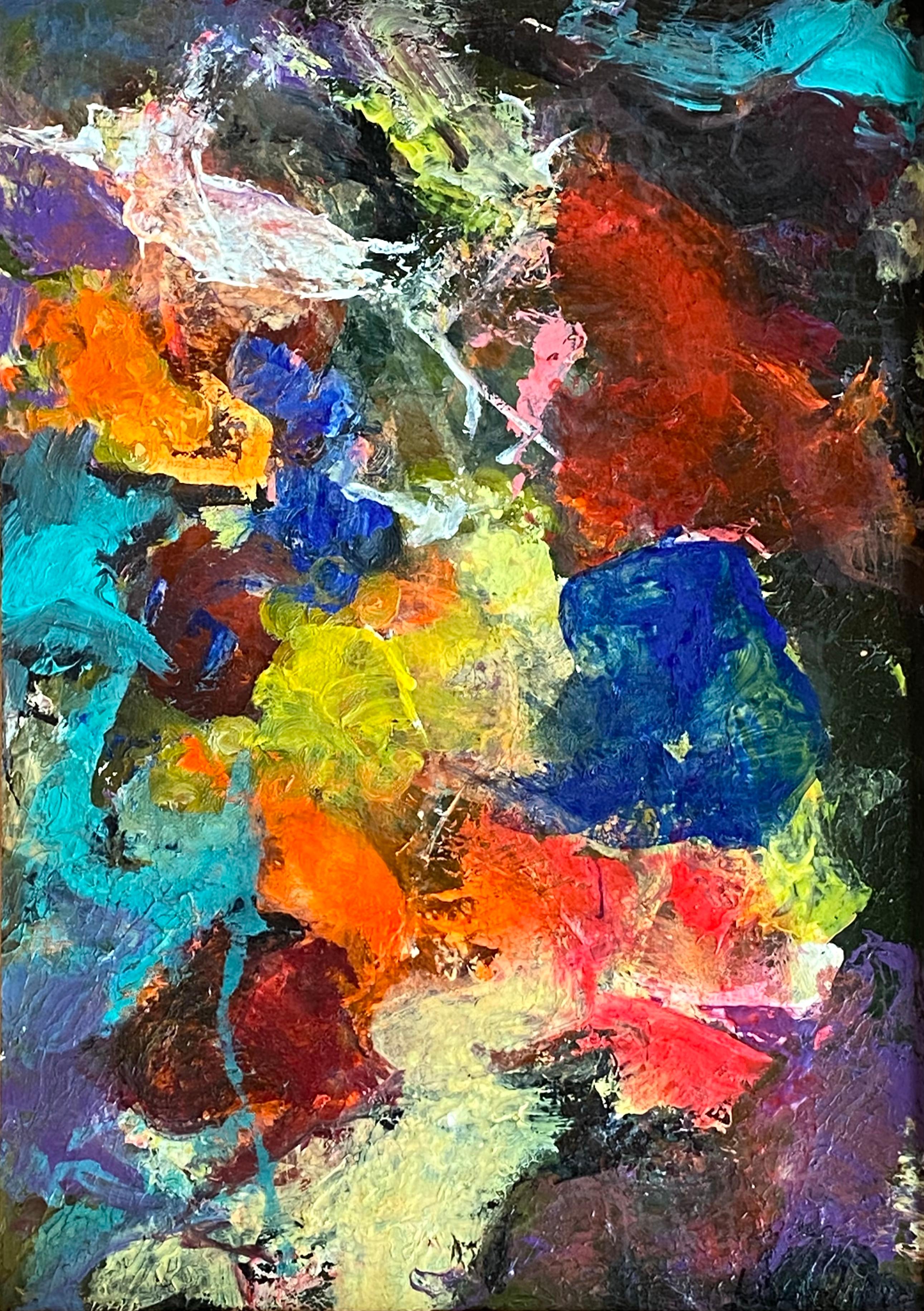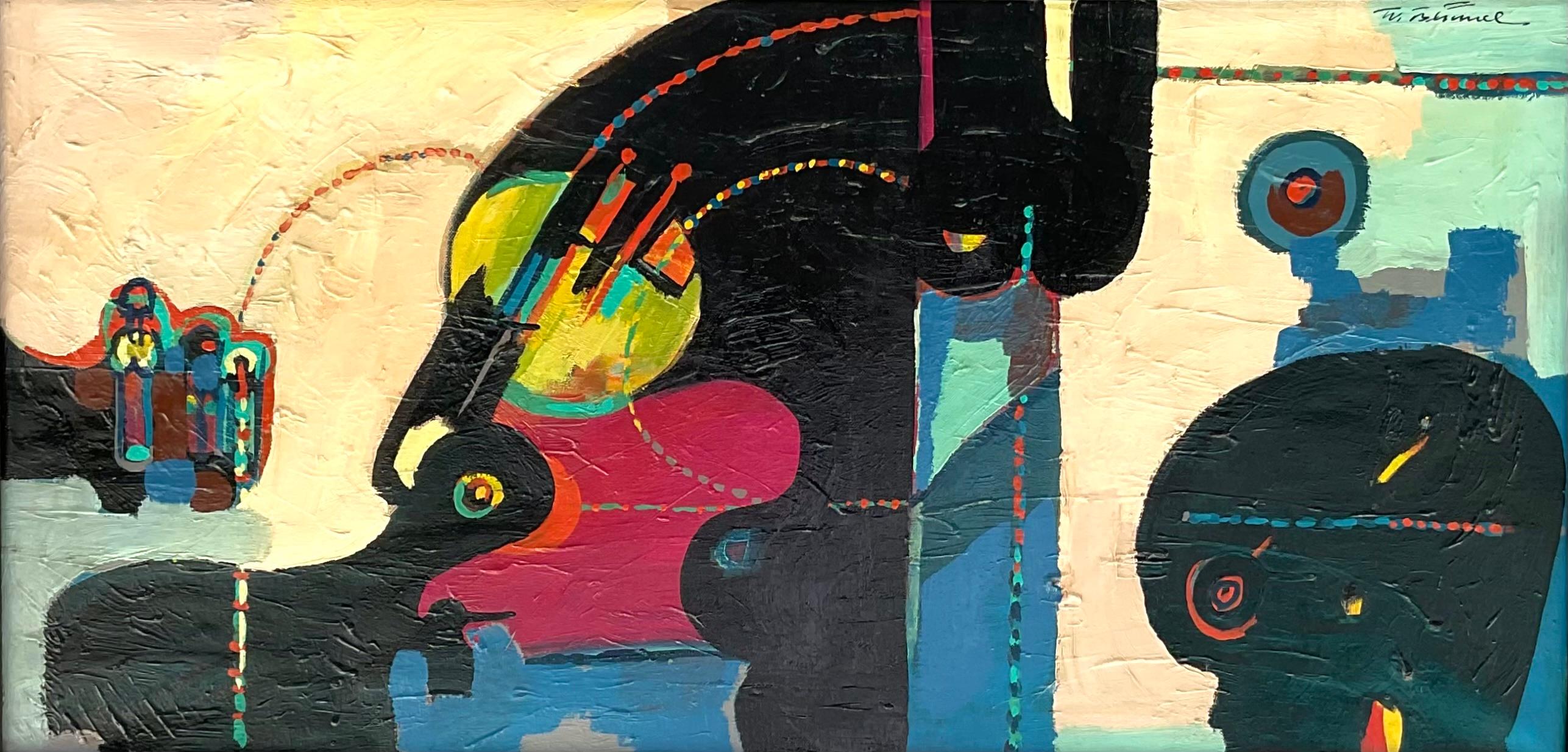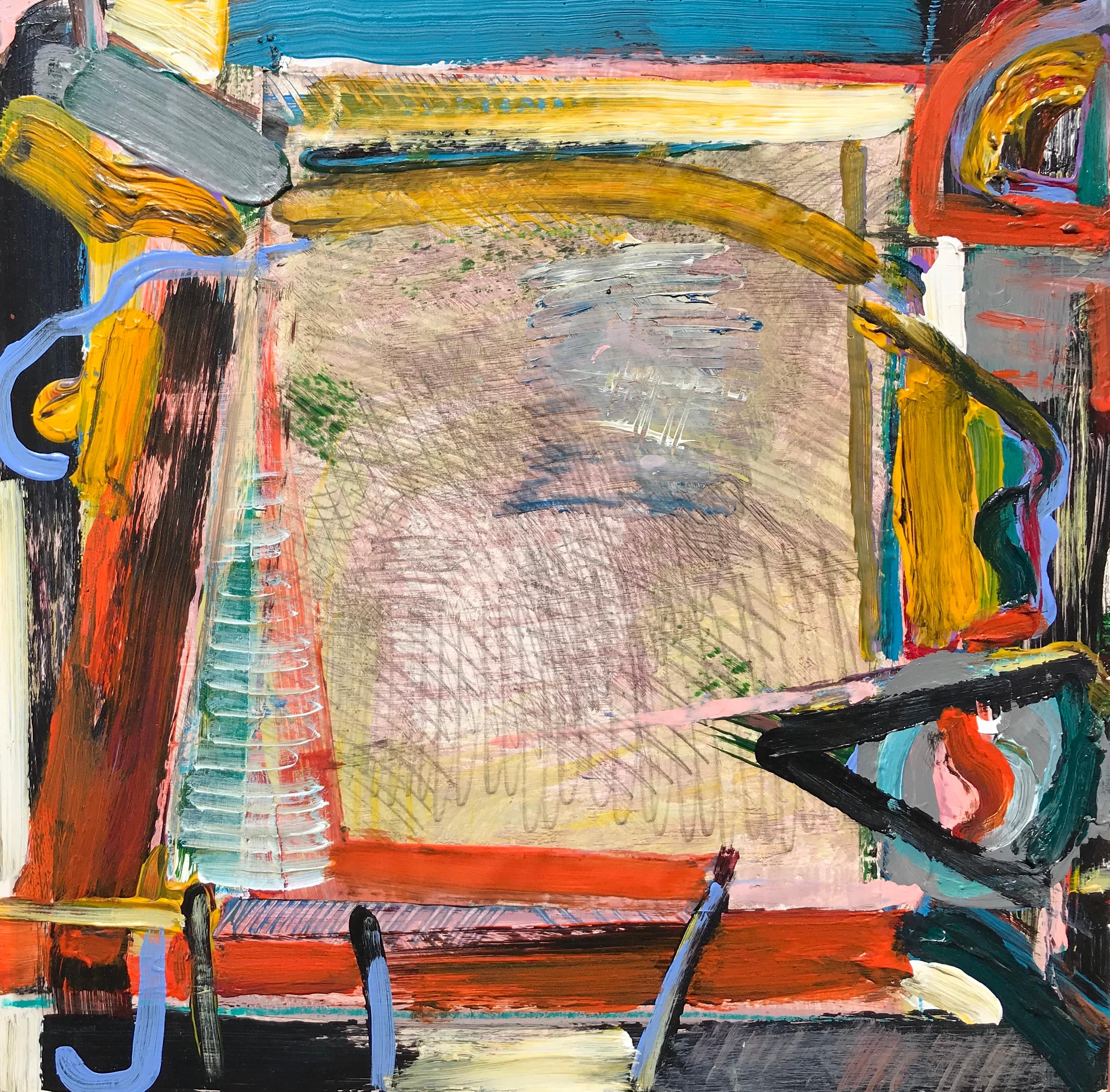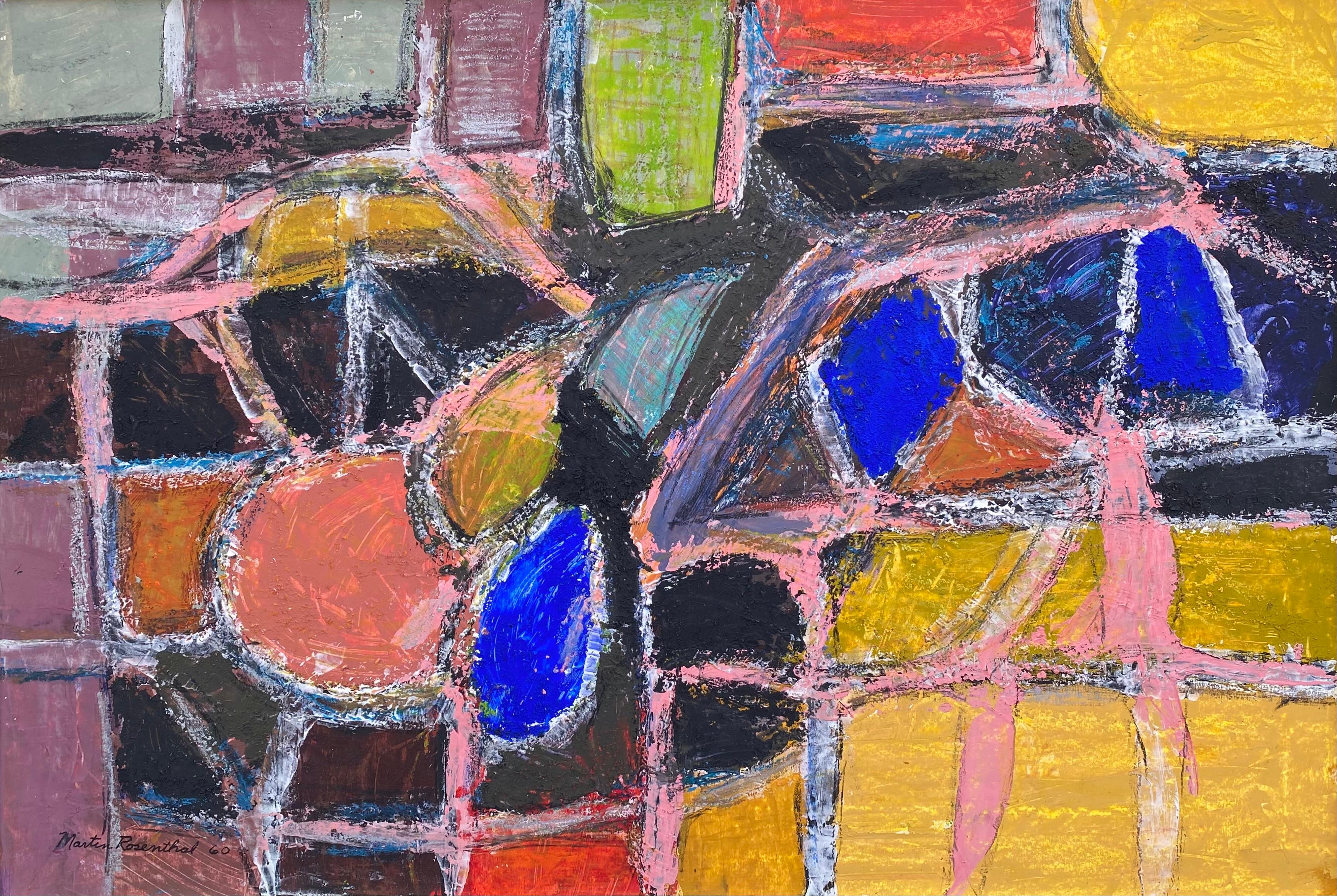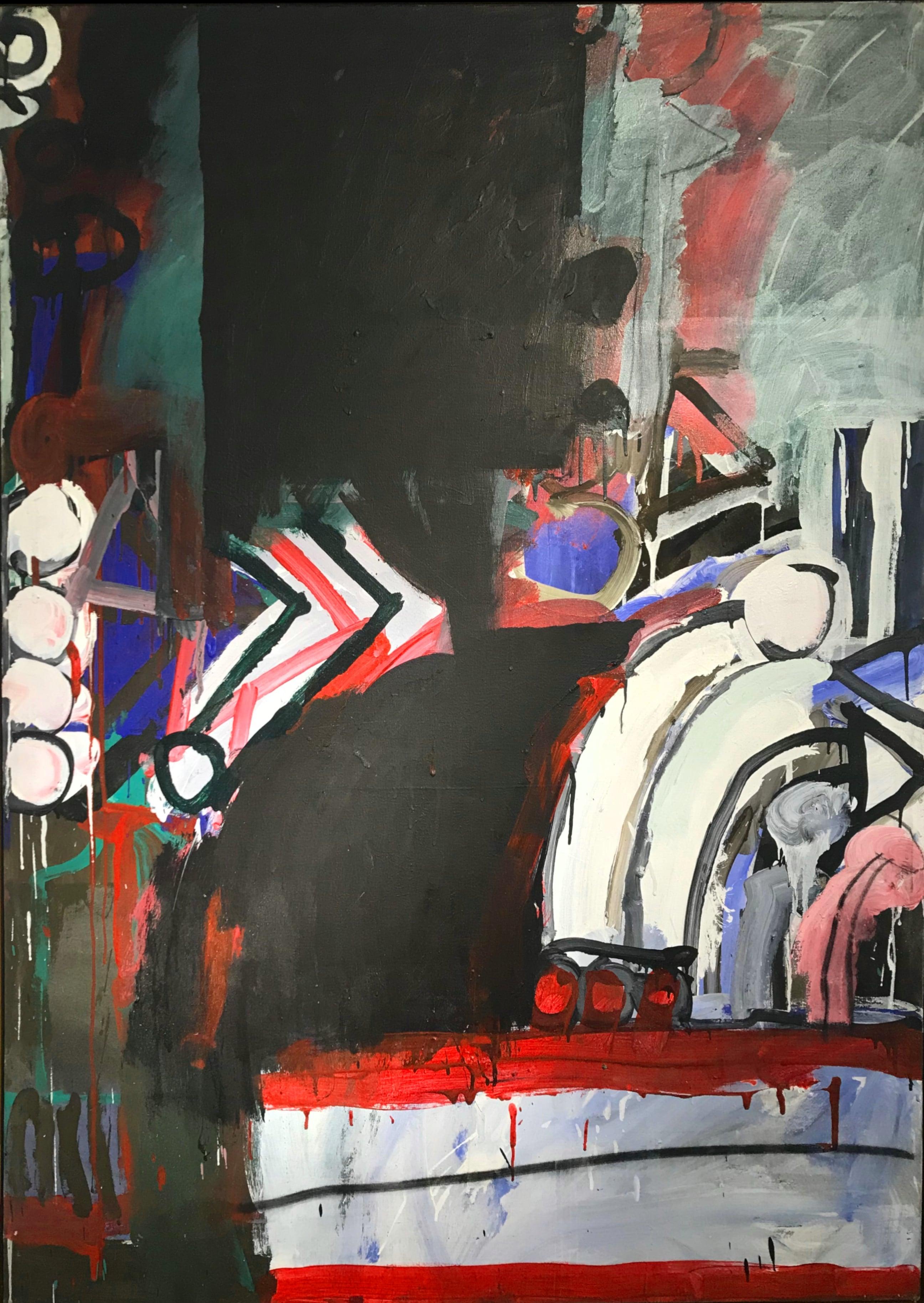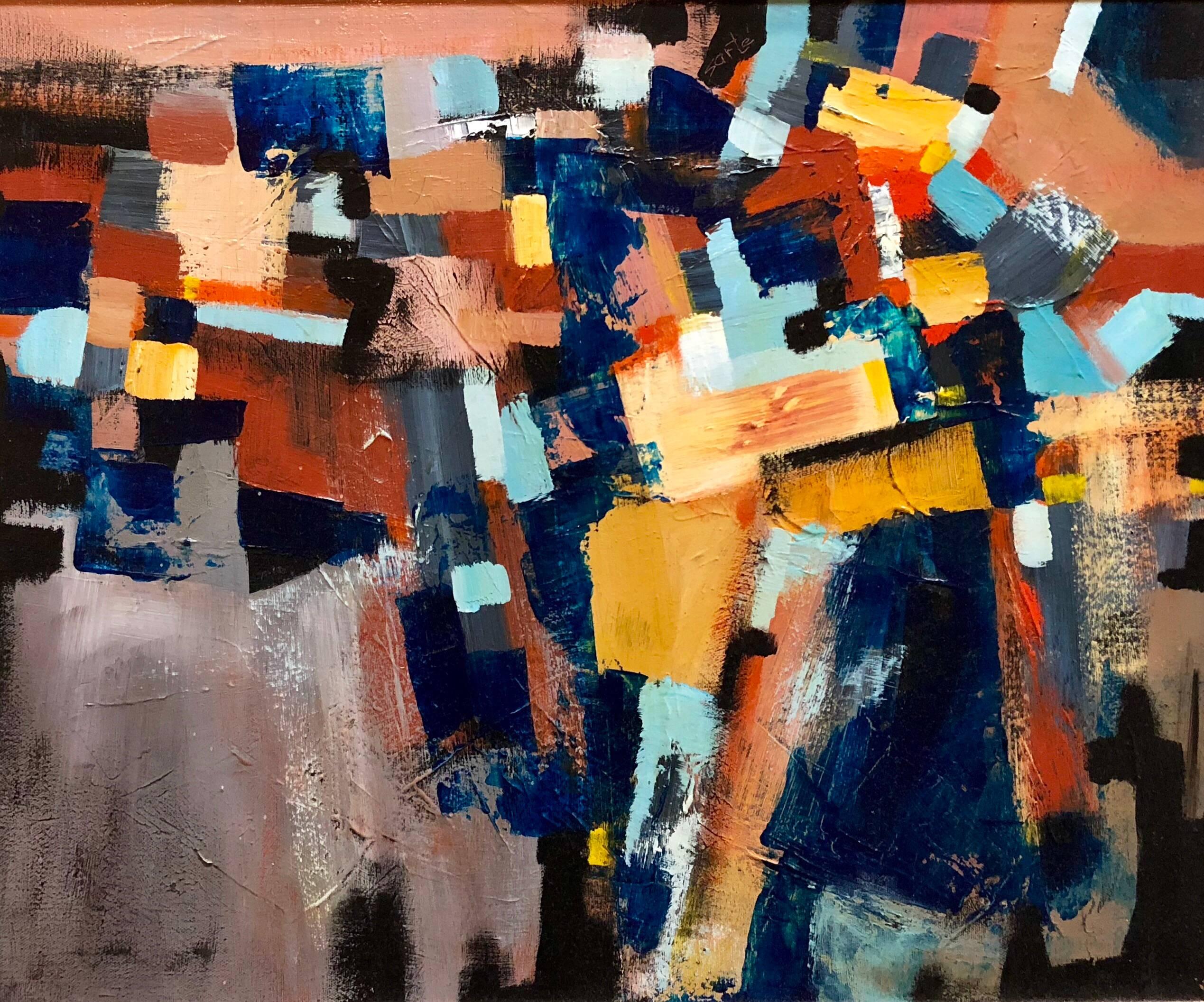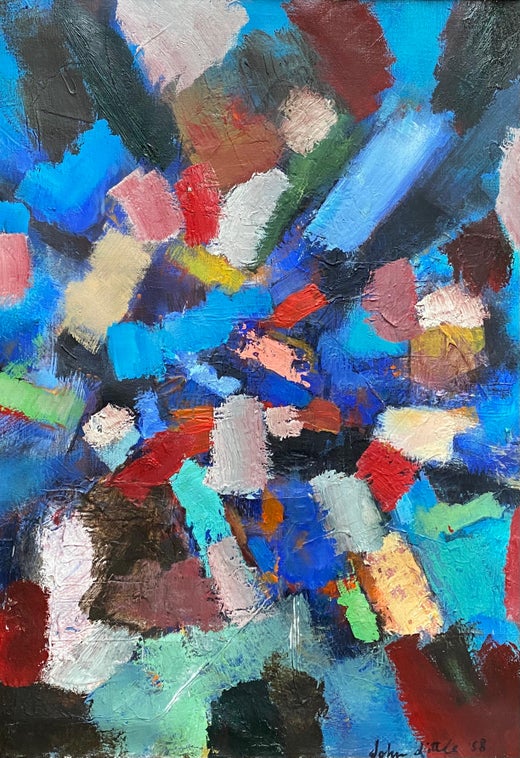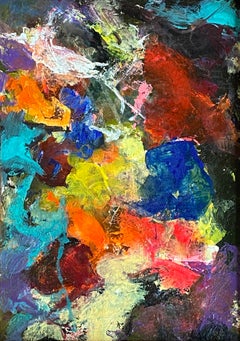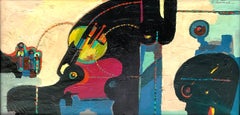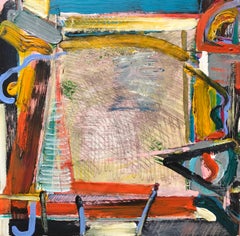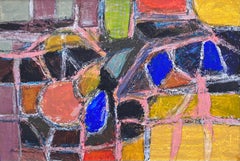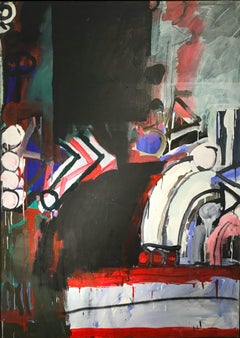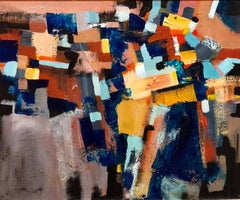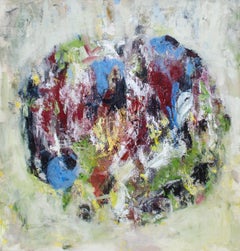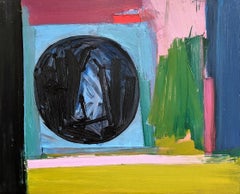Want more images or videos?
Request additional images or videos from the seller
1 of 12
John Little“Untitled”1958
1958
$14,000
£10,804.96
€12,300.81
CA$19,990.79
A$21,803.86
CHF 11,488.77
MX$261,486.44
NOK 144,658.33
SEK 134,963.29
DKK 91,865.31
About the Item
Early, original oil on canvas painting by the well known American abstract expressionist artist, John Little. Signed and dated lower right, 1958.
Signed and dated verso. Rose Fried Gallery, New York exhibition label verso. Condition is very good. The artwork is framed with an old but not original gallery frame in mat black with gold inner liner. Overall framed measurements are 33 by 24.5 inches. Provenance: A Palm Beach, Florida estate.
John Little, American (1907-1984)
John Little was born in 1907 in Alabama and as a teenager attended the Buffalo Fine Arts academy from 1924 to 1927. Soon after he moved to New York, where he began operatic vocal training and opened what became a very successful textile business designing fabric and wallpaper. In 1933 he began classes at the Art Students League with George Grosz, painting mainly Cezannesque landscapes. In 1937 he started working with Hans Hofmann in both New York and Provincetown, which pushed him towards abstraction and his first serious involvement as a painter. At Hofmann’s school he met artists such as Lee Krasner, George McNeil, Gerome Kamrowski, Giorgio Cavallon and Perle Fine. In 1942 he went into the service as a navy aerial photographer.After the war he returned to New York and, with nowhere to stay, moved into Hans Hofmann’s 8th Street studio where his neighbors were Lee Krasner and Jackson Pollock. The paintings of the late 1940s reveal great experimentation and a growing interest in both Surrealist automatism, Picasso, and the theories of Hans Hofmann. In 1946 Little was given his first one-man show at the California Palace of the Legion of Honor in San Francisco with a follow-up solo show at Betty Parsons in 1948. In the early 1950s Little abandoned the flat, linear style of the 40s with new works painted in thick, gestural buildup of paint. He also began a series of constructions created from driftwood and beach-combing detritus. In 1951 he moved to East Hampton, where he maintained a closed friendship with Pollock - the two had a joint exhibition in 1955 at Guild Hall. In 1957 Little helped found the Signa Gallery, an important outpost in East Hampton for the growing New York art scene and host to many influential exhibitions. Little continued to actively exhibit until his death in 1984.Little had solo exhibitions at, among others, Betty Parsons Gallery in 1948, Bertha Schaefer Gallery in 1957 and 1958, Worth Ryder Gallery in 1963, A.M. Sachs Gallery in 1971 and a retrospective at the Guild Hall Museum in 1982. His work is part of the permanent collections of The Metropolitan Museum of Art, The Guild Hall Museum, Ball State University Museum of Art and Galerie Beyeler among others. Biography taken from McCormick Gallery.
- Creator:John Little (1907-1984, American)
- Creation Year:1958
- Dimensions:Height: 27 in (68.58 cm)Width: 19 in (48.26 cm)Depth: 1.75 in (4.45 cm)
- Medium:
- Movement & Style:
- Period:
- Condition:
- Gallery Location:Southampton, NY
- Reference Number:1stDibs: LU14113724442
John Little
Born in Alabama, John Little attended the Buffalo (NY) Fine Arts Academy as a teenager, until 1927. Soon after, he moved to New York where he began operatic vocal training and opened what would become a very successful textile business designing fabric and wallpaper. In 1933, he enrolled at the Art Students League under the tutelage of George Grosz. Little’s early work consisted predominantly of landscapes, until 1937, when he began studying under Hans Hofmann and his work naturally shifted toward abstraction. During his time with Hofmann, he with artists such as Lee Krasner, George McNeil, Gerome Kamrowski, Giorgio Cavallon, and Perle Fine. Little entered the the service in 1942 as an aerial photographer for the Navy. Returning to New York after the war and with nowhere to stay, he reconnected with Hofmann and moved into his 8th Street studio, alongside his friend Lee Krasner and her husband Jackson Pollock. In 1946, Little earned his first solo exhibition at the California Palace of the Legion of Honor in San Francisco, with a subsequent solo exhibition at Betty Parsons Gallery in New York two years later. In the early 1950s, Little abandoned the flat, linear style in favor of a new aesthetic consisting of the thick, gestural buildup of paint. This stylistic change was concurrent with his move to East Hampton In 1951. This enabled him to continue a close friendship with Krasner and Pollock, who had already left the city in favor of the more rural area around East Hampton. Little and Pollock had a joint exhibition in 1955 at Guild Hall, one year before Pollock’s tragic death. John Little exhibited extensively during his career, with solo shows at Betty Parsons Gallery (1948), Bertha Schaefer Gallery (1957, 1958), Worth Ryder Gallery (1963), A.M. Sachs Gallery (1971), and a retrospective at the Guild Hall Museum (1982). His work can be found in many private, institutional, and corporate collections around the world, including the Metropolitan Museum of Art, Guild Hall Museum, Ball State University Museum of Art, and Galerie Beyeler.
About the Seller
5.0
Platinum Seller
Premium sellers with a 4.7+ rating and 24-hour response times
Established in 1977
1stDibs seller since 2013
552 sales on 1stDibs
Typical response time: <1 hour
- ShippingRetrieving quote...Shipping from: Sarasota, FL
- Return Policy
More From This Seller
View All“Untitled”
By John Little
Located in Southampton, NY
Original oil on canvas painting by the well known abstract expressionist artist, John Little. Signed lower right. Signed and dated 1965 on top stretcher bar verso. Betty Parsons Ga...
Category
1960s Abstract Expressionist Abstract Paintings
Materials
Canvas, Oil
$9,600 Sale Price
20% Off
“Untitled Abstract”
Located in Southampton, NY
Original oil on canvas abstract painting by the Czech/German artist, Walter Blumel. Signed upper right by the artist and verso as well. Condition is very good. Circa 1965. Overall ...
Category
1960s Abstract Expressionist Abstract Paintings
Materials
Canvas, Oil
“Untitled”
By Iliyan Ivanov
Located in Southampton, NY
Original acrylic on fiberboard painting by the Bulgarian/American artist, Iliyan Ivanov. Signed, and dated verso, 2012. Untitled. This painting is part of the “Memories of Unfinis...
Category
2010s Abstract Expressionist Abstract Paintings
Materials
Acrylic, Fiberboard
$1,480 Sale Price
20% Off
“Untitled Abstract”
By Martin Rosenthal
Located in Southampton, NY
Original abstract oil painting on heavy card stock by the American artist Martin Rosenthal. Signed lower left and dated 1960. Condition is very good. Slight bow to board. Nicely pro...
Category
1960s Abstract Expressionist Abstract Paintings
Materials
Oil, Board
$2,080 Sale Price
20% Off
“Untitled”
By Anne Raymond
Located in Southampton, NY
Original oil on fiber board painting by the American artist, Anne Raymond. Circa 1910. Condition is excellent. Signed verso. Presently unframed. Provenance: A Long Island collector...
Category
2010s Abstract Expressionist Abstract Paintings
Materials
Oil, Fiberboard
“Untitled”
By Iliyan Ivanov
Located in Southampton, NY
Original acrylic on fiberboard painting by the Bulgarian/American artist, Iliyan Ivanov. Signed, and dated verso, 2012. Untitled. This painting is part of the “Memories of Unfinis...
Category
2010s Abstract Expressionist Abstract Paintings
Materials
Acrylic, Fiberboard
$1,480 Sale Price
20% Off
You May Also Like
Untitled
Located in New York, NY
This work conveys a sense of mystery and excitement carefully contained. Deep black in the middle draws the viewer in, provoking one to slowly expand their view out to the edges of t...
Category
Late 20th Century Abstract Expressionist Abstract Paintings
Materials
Canvas, Acrylic
A Glazing Medley, Abstract Expressionist Oil on Canvas Painting
Located in Surfside, FL
Inn the manner of the Hans Hofmann School. A great older Abstract Expressionist painting.
Category
20th Century Abstract Expressionist Abstract Paintings
Materials
Canvas, Oil
Charming Abstract Expressionist Painting by Mystery Artist
Located in New York, NY
Mystery Artist
Untitled, 20th Century
Oil on canvas
38 x 36 x 1 1/2 in.
Category
20th Century Abstract Expressionist Abstract Paintings
Materials
Canvas, Oil
Untitled
Located in Vancouver, CA
Ron Stonier (1933-2001) was a dedicated Vancouver artist celebrated for his exploration of abstract painting, influenced by his mentors Gordon Smith and Jack Shadbolt, as well as by ...
Category
1960s Abstract Abstract Paintings
Materials
Canvas, Oil
More Captured Color
Located in New York, NY
Abstract painting.
About the artist:
Restlessly creative is how I describe myself. Probably explains my varied career in numerous creative-type fields; broadcast, on-camera,...
Category
2010s Abstract Abstract Paintings
Materials
Canvas, Acrylic
What I Found, Abstract Painting
By Gary J. Noland Jr.
Located in San Francisco, CA
Artist Comments
Artist Gary J. Noland Jr. explores color and balance in this abstract piece. Deliberate pours, strokes, and drips create an interplay between control and sponta...
Category
21st Century and Contemporary Abstract Abstract Paintings
Materials
Acrylic
More Ways To Browse
Galerie Beyeler
Giorgio Cavallon
Helen Frankenthaler Painting
Laurie Barmore
Mango Art
Matisse Collage
Miles Mcenery Gallery
Nan Oil Paintings
New York Stock Exchange
Paintings From The 1940s
Picasso Style Painting
Texas Mid Century Modern
The Great Escape
Ve Boisvert
Will Roberts
1995 Abstract Painting
Abstract Art For Sale
Art With Teal Blue
